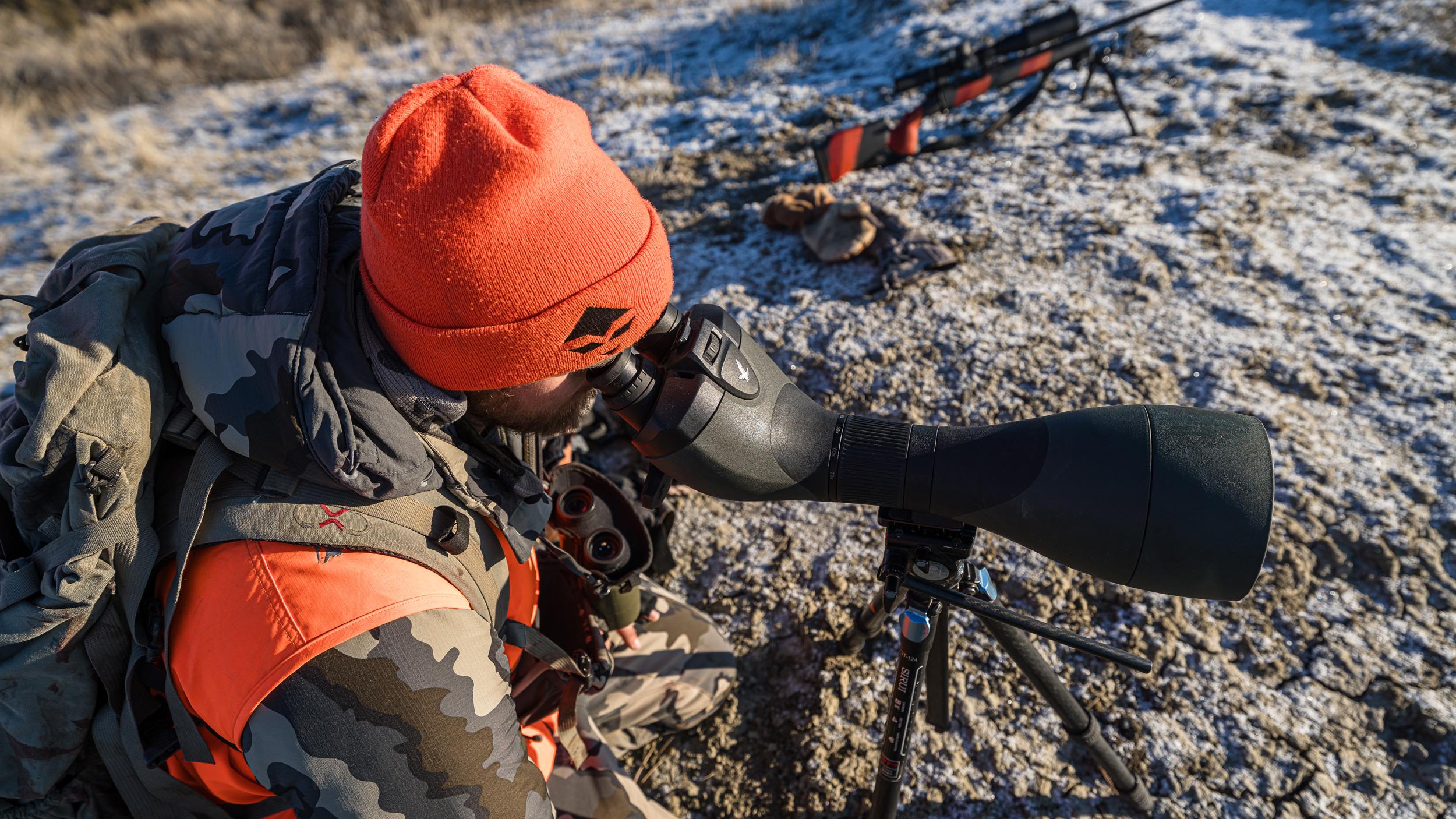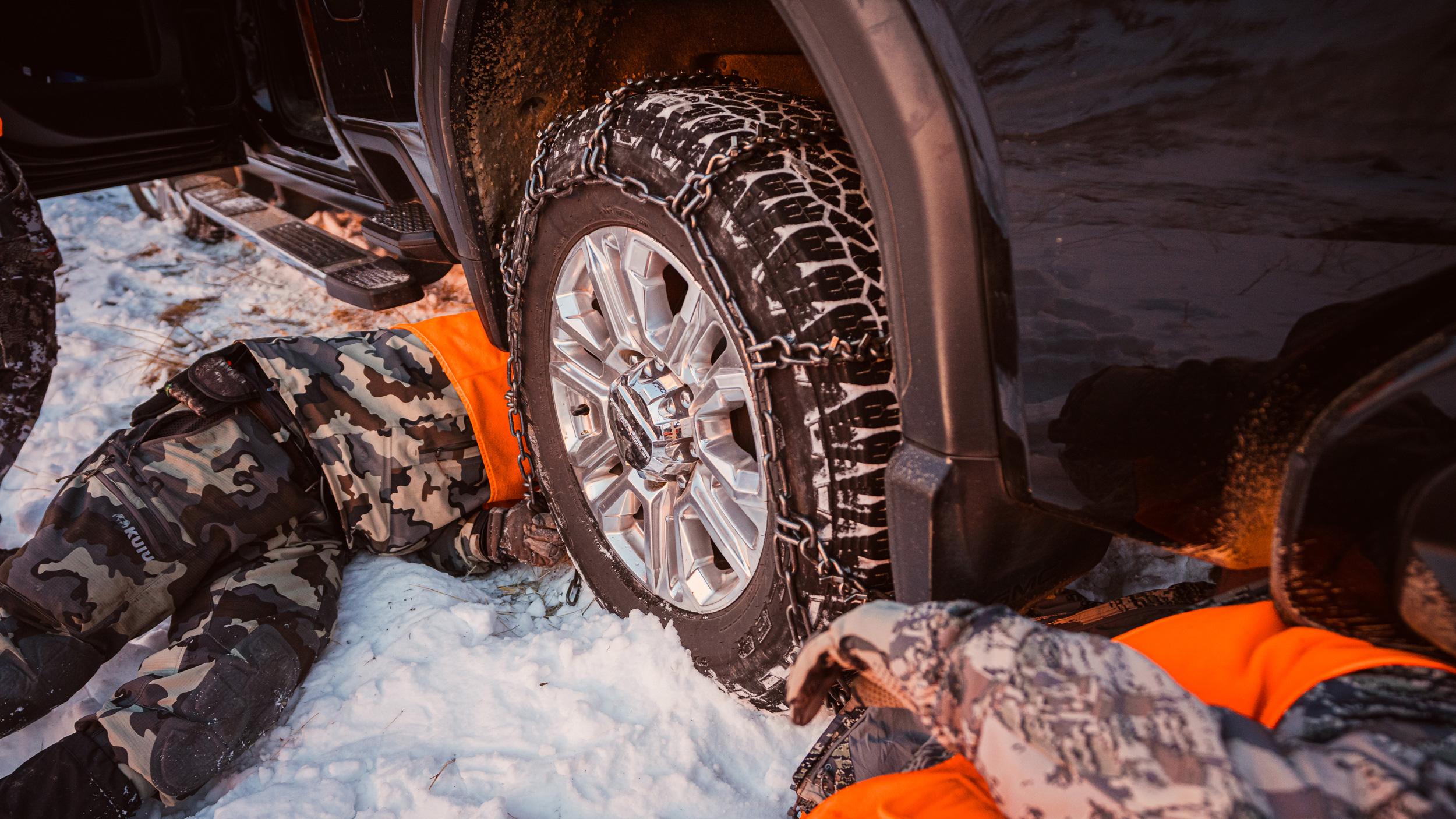




Tipi and stove setup for late season mule deer hunting.

My biggest buck to date, a 204" mule deer that I took on a late-season hunt.

Glassing for rutting mule deer with a Swarovski BTX and 115mm spotting scope.

The challenges of late-season mule deer hunting can wear on you.

As November rolls in, it’s prime time for hunting mule deer during the rut. There are a ton of different tactics for hunting the rut/late season, but here are eight of the ones that can exponentially increase your success.
I feel it's best to find a way to get away from the crowds, so avoid easy-to-access spots where people will hunt out of their trucks or ATVs.
Barriers of entry are huge for this. If there is a trailhead and surrounding the trailhead is a bunch of terrain that is harder to hike in, most people are probably going to avoid that area and hike further in along the trail. But you can use this to your advantage and possibly hunt some closer areas that are not fun to get into.
It’s no secret that many hunters will be out during the rut, so finding ways to avoid hunting pressure is key. You don’t need to trek deep into the backcountry per se, but avoid heavily trafficked areas. Many hunters stick close to roads, so pushing further into areas others may overlook increases your chances of finding mature bucks. Also, if you have the ability to camp away from roads with a tipi and lightweight tent stove, that can greatly put you in a position to take a mature buck.
Use other hunters to your advantage—observe where they're glassing and hunt from different angles to avoid direct competition.
Love is in the air in the mule deer world during November in most western states. So if you find the does, eventually, bucks will show up. You could sit on doe groups and wait, or another great strategy is to run around and keep checking out all the doe groups you can find so you have backup plans. Note: take your glass and look at areas around where the does are at. A lot of the time, you might catch a buck bedded in some cover near the does. Even during the rut, some bucks still like to be a little secretive when it comes to showing themselves in the open.
Back in 2018, every morning I would check on a group of does and only small bucks were with them. It wasn't until later in the hunt that a true giant finally showed up, and I was able to capitalize on my biggest buck to date. So checking on that group of does each day paid off in a huge way.
During the rut, bucks are actively seeking does. If you find groups of does, bucks are likely nearby. However, large bucks may not always be in plain sight with the does; they often hang back in nearby terrain, especially early in the rut.
Don’t be discouraged if you don’t see bucks immediately. Keep an eye on doe groups and return to the same area as the rut progresses. Bucks may appear later in the season, or even within the same day, as they cover long distances searching for hot does.
Glassing is essential during the mule deer rut, and with colder, harsher conditions, you’ll need to be diligent with your optics. Bucks will often bed in areas sheltered from the wind or in thick cover, so glassing from multiple angles is crucial.
Use your binoculars in the early morning and transition to a spotting scope during midday when bucks are more likely to be bedded in shaded areas. Focus on glassing small pockets of terrain that others may overlook—these often hold mature deer.
You can't hunt bucks you can't see. So always utilize your optics and try to dig up a buck that might still be hanging out in thick timber or brush. Put yourself in an area where you can cover a lot of the country, especially near areas that some people might not want to hunt in due to thick terrain or lack of roads. The more time you spend behind your optics, the greater the chance you will pick up deer and learn where the deer like to hang out during the rut.
Also, if there is snow on the ground, I really like to glass up tracks and then try to see what direction they are headed. Then, I will either use my 16 power ZULU6 HDX Image Stabilized binoculars or my Swarovski BTX and 115mm spotting scope, and dissect the timber or brush to find bedded deer. Or I will hike closer and try to ambush the area by finding a spot to look into it from higher up and be close to the action. That will put you within striking distance and allow you to potentially find hidden pockets that might have been tough to glass from further away.
Covering ground is important, whether glassing from different vantage points or using roads to your advantage. In some states, driving and glassing from a vehicle is a legitimate tactic, especially in more open country. So, even though I stress getting away from the crowds, you can still use roads and long-distance glassing to your advantage.
Be willing to explore less obvious areas close to roads. Many hunters overlook small pockets of habitat near roadways, but these areas can hold deer, during the mule deer rut, especially when the rest of the landscape is heavily pressured.
Late-season hunts can be physically and mentally demanding. Cold, snowy conditions combined with long hours of glassing can wear you down. However, mental toughness is key to staying in the game.
The rut provides brief windows of opportunity, and being prepared to seize those moments can make the difference between success and failure. Stay motivated, even if you haven’t seen any action for hours—bucks can show up at any time, and persistence often pays off.
It is well known that on later-season hunts under ideal conditions, you should seek out migration corridors, as that is where deer will start moving once heavy snowfall blankets the mountains or the hint of the rut hits the air.
But what happens if you look at those migrations routes backward? What do you see? If you take note of a migration route, you’ll see that they start from a higher elevation and move downward. So, if you happen to have a chance at mild weather, you can use this to your advantage and hunt above the “typical” migration corridor.
What do mature deer do if they sense pressure from hunters and, at the same time, have all their nutritional requirements at higher elevations? They head to those so-called “unusual places.” What I mean by this is if mature mule deer sense pressure from hunters in late October and early November, why would they want to move to lower elevations where there are more hunters, more commotion, and an increased chance that they will get shot? If higher elevations still have the nutritional requirements as well as safety, then a giant buck will not risk moving into the firing range. This is what I believe also happened on my 2018 Colorado hunt. So, I never let "elevation" determine where I will focus my efforts. I will always search for bucks at higher elevations which some people might avoid due to cold temperatures or difficulty accessing with a truck or ATV. Searching out all the zones where a buck could be will eventually put you in the spot with the most deer activity.
Also, a key part in this stage, is again using hunter pressure to your advantage. If you see large groups of hunters in one area, that is a great opportunity to move to areas on the fringe. This is where deer are going to get pushed into. Lots of hunters might be hunting in a spot due to easy access so you just need to start figuring out ways to out-hunt other hunters.
If you are in a mountain area, the later in the season, the greater the chance that deer have started to migrate down, and that means they might start to congregate on private lands. So a great strategy is to focus on some of the public lands near private to either catch bucks coming off private or moving to a private land spot. This tactic can be kind of frustrating at times, as it could be a game of patience. But with patience can come success!
Even if the area you are hunting doesn't have a ton of high elevations, hunting near private land can still be a great tactic. You'd be surprised at how many people avoid the small accessible sections of public land near big sections of private because they feel that all the deer might just get sucked into private.
Private lands are also deer sanctuaries because deer there start to know they are safe. But it's the rut, and you just never know if a buck will come into the area and push a bunch of deer back to public land.
I've always said that if you want to be more successful at mule deer hunting, you need to think outside the box. Sometimes, getting away from people might involve grabbing a tent and a stove and backpacking out. A lot of people aren't going to want to do that. You've probably heard me say it before, but if you always do what 95% of the hunters do, then you will have success like 95% of the hunters do. If you want to take a buck that maybe 5% or less of the hunters take, then you need to think outside the box and do what other hunters aren't willing to do. A solid plan and a great mindset will put you in the right position for success on a big rutting mule deer.
Mule deer hunting during the rut requires a combination of patience, persistence, and strategy. You'll increase your chances of success by getting away from the crowds, focusing on doe groups, utilizing optics, covering lots of ground, and staying mentally tough. Mule deer rut hunts are a special time of year, so enjoy every moment and make the most of the opportunity!
Check out this other video for some other tactics covered in this article as well:
If you have any questions, leave a comment below, and I will get back to you. There are a ton of different ways to kill a buck in the rut or on late-season hunts. These are just a few of the techniques I utilize each year, and they have worked wonders for me. Best of luck for the rest of the season!
This article was originally published on November 2, 2020, and has been updated with more information.